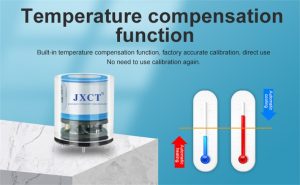Gas sensors are essential tools for monitoring air quality, detecting toxic gases, and ensuring workplace safety. They have been used in various industries, including manufacturing, mining, and healthcare, to detect and measure the concentration of gases in the air. However, traditional gas sensors have limitations in terms of accuracy, sensitivity, and selectivity, which can affect their performance and reliability. With the advancement of technology, new gas sensor technologies have emerged, which have the potential to revolutionize environmental monitoring and improve public health.

The traditional gas sensors are based on the principle of chemical reactions
which involve the interaction of gases with a sensing material. The sensing material changes its properties when exposed to gases, which can be measured and analyzed to determine the concentration of gases in the air. However, the sensing material may also react with other gases, leading to false readings or cross-sensitivity. Moreover, the sensing material may degrade over time, reducing the sensor's sensitivity and accuracy.
To overcome these limitations, researchers have developed new gas sensor technologies
such as optical sensors, electrochemical sensors, and nanomaterial-based sensors. These sensors utilize different principles and materials to detect and measure gases, offering improved accuracy, sensitivity, and selectivity. For example, optical sensors use light to detect gas molecules, which can be measured and analyzed to determine the gas concentration. Electrochemical sensors use electrodes to detect and measure the electrochemical reactions between gases and sensing materials, which can provide real-time monitoring of gas concentrations. Nanomaterial-based sensors use nanomaterials, such as carbon nanotubes, graphene, and metal oxides, to detect and measure gases, offering high sensitivity and selectivity.
One of the most promising applications of gas sensors is environmental monitoring, particularly air quality monitoring
Air pollution is a major public health concern, causing respiratory diseases, cardiovascular diseases, and cancer. According to the World Health Organization (WHO), outdoor air pollution causes 4.2 million premature deaths each year worldwide. Indoor air pollution is also a significant health risk, particularly in developing countries, where people rely on solid fuels for cooking and heating. Gas sensors can provide real-time monitoring of air quality, detecting and measuring pollutants such as carbon monoxide, nitrogen oxides, sulfur dioxide, ozone, and particulate matter. This information can be used to develop effective strategies to reduce air pollution and protect public health.

Gas sensors can also be used for industrial safety, particularly in hazardous environments such as mining, oil and gas fields, and chemical plants. Gas leaks can cause explosions, fires, and toxic exposures, leading to injuries and fatalities. Gas sensors can detect and measure the concentration of gases in the air, alerting workers to potential hazards and enabling them to take appropriate actions to prevent accidents. Gas sensors can also be used for medical diagnosis and treatment, such as monitoring the concentration of gases in exhaled breath to detect diseases such as asthma, lung cancer, and tuberculosis.
In conclusion, gas sensors have the potential to revolutionize environmental monitoring and improve public health. With the development of new gas sensor technologies, such as optical sensors, electrochemical sensors, and nanomaterial-based sensors, gas sensors can offer improved accuracy, sensitivity, and selectivity, enabling real-time monitoring of air quality, industrial safety, and medical diagnosis and treatment. However, further research is needed to optimize gas sensor performance, reduce costs, and increase the availability of gas sensors for widespread use.
 : +86 155 8830 2704
: +86 155 8830 2704 : jxdziot@gmail.com
: jxdziot@gmail.com
